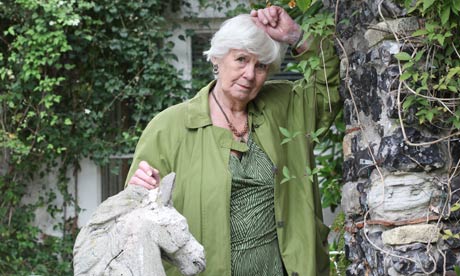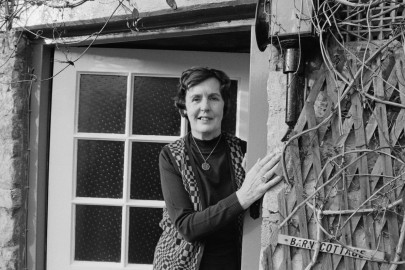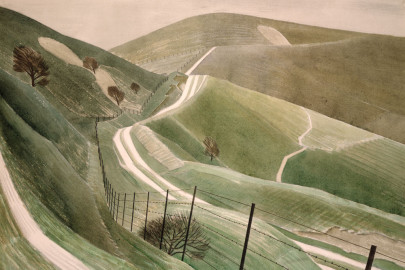Today we suggest you seek out the works of the representative of a long-lost tribe – many of them available for a mere penny on the web…
Despite being prolific and successful, (twice winner of the Whitbread, winner of the Heywood Hill lifetime achievement prize et cetera), Jane Gardam is not well-known in the way that Martin Amis, Julian Barnes and Ian McEwan seem to be. Perhaps this lack of celebrity is merely due to the fact that she doesn’t do a lot of publicity. Maybe though it is that the world she so perceptively brings to life in her books is not a glamorous one.
Gardam’s work ranges from straightforward stories of middle-class English life to accounts of events that border on the surreal. Her setting is usually England, or, less often, the Far East – but only those parts that formed part of the British Empire. Her characters are almost exclusively English, but of a breed uncommon these days – or possibly even extinct. They are the kinds of people Joyce Grenfell portrayed so accurately – not urban, ambitious, ruthless types, but people schooled in politeness and self-control, in putting up with things, putting on a bright face and not putting themselves forward, in making do and minding their own business. They have emotions, they experience love and tragedy and passion, but unlike their modern counterparts, what they exhibit to the world is, principally, restraint. Gardam is the chronicler of a lost England in which Stoicism was the bedrock of life.
There is Pammie Jefford (the name is perfect – what else could she be but a staunch county woman) in Faith Fox, who hears of her daughter’s death while she is “at the hospital, doing her voluntary work”. There is Molly Fielding in Telegony, whose mother “had taught her how to handle dogs” (what skill could be more important, apart, perhaps, from knowing how to manage a horse?) There is the mother in Blue Poppies, (a really beautiful story that conveys so well the irritated yearning that can exist between a parent and child) who “wore a hat and gloves and surveyed the rainy world through the car window” and “wrote letters every day. She had done so since she was a girl” and, in the same story, the Duchess who “is no beauty” with “a beak of ivory and deep-sunken, hard blue eyes … hair [that] is scant and colourless … [a] face [that] is weather-beaten” and “the voice of [a] razorbill” and who “at a luncheon party given in aid of the preservation of trees” is seen by the narrator “over in a corner, standing by herself and eating hugely, her plate up near her mouth, her fork working away, her eyes swivelling frostily about”, before she “cut herself a good half-pound of cheese and put it in her pocket. Going to a side-table she opened her handbag and began to sweep fruit into it. Three apples and two bananas disappeared, and the people around her looked away.”
Above all, there is Old Filth, aka Edward Feathers, briefly happy as a child in the Far East, sent ‘home’ to a lonely and abused childhood, a ‘Raj orphan’ who becomes a highly successful, utterly self-contained adult, unreachable behind his armour of tailoring and cleanliness and impeccably well-polished shoes:
He was spectacularly clean. You might say ostentatiously clean. His ancient fingernails were rimmed with purest white. The few still-gold hairs below his knuckles looked always freshly shampooed, as did his curly still-bronze hair. His shoes shone like conkers. His clothes were always freshly pressed. He had the elegance of the 1920s, for his garments, whatever they looked like off, always became him. Always a Victorian silk handkerchief in the breast pocket. Always yellow cotton or silk socks from Harrods; and some still-perfect from his old days in the East. His skin was clear and, in a poor light, young.
Gardam’s extended portrait of Feathers and his milieu, through Old Filth, The Woman in the Wooden Hat and, just recently, Last Friends, vividly captures the generation of English who went through the war and saw the last of Empire. In my childhood, these were the people who appeared to dominate proceedings. At some point, however, they were elbowed aside and seem now to be pretty much eradicated. Gardam’s work, while entertaining, is also a memorial, ensuring that they do not vanish without any trace.
While the novel Gardam considers her greatest – Crusoe’s Daughter (a really marvellous book, even at the current asking price of £4.14) – is not among those offered for 1p on Amazon, the first two volumes in the Old Filth series, plus Faith Fox, The Flight of the Maidens and the short story collections Going into a Dark House and The Pangs of Love, among many others, are (they’re all here). I highly recommend them. They are enjoyable and perceptive – and, as time goes on, they may take on an added function, serving as poignant aides-memoire for a long lost tribe.
Would you like to recommend one of the thousands of books that can be bought online for a penny (or a cent)? Email your submission to editorial@thedabbler.co.uk












I often see Old Filth in the charity shops, really must get round to reading it
I always imagine Gardam books being the sort of thing that Nige would like?
Poor Old Filth, I think he’d be sad to know he’d descended to charity shops. But perhaps that’s the best way to find good suits these days.
I absolutely love Jane Gardam – Crusoe’s Daughter and Old Filth are brilliant. My parents knew her when she lived in Wimbledon. When she was in Wimbledon for a signing, I nervously approached her and she was absolutely charming. Her books I suppose get placed in the category of ‘literary fiction’ but they are soooo much more interesting, original and subtle than stuff produced by the likes of McEwan et al. It’s amazing in a way she’s not better known, although of course long treasured by publishers and bookworms. When you read one of her books, you fall in love with the novel form all over again.